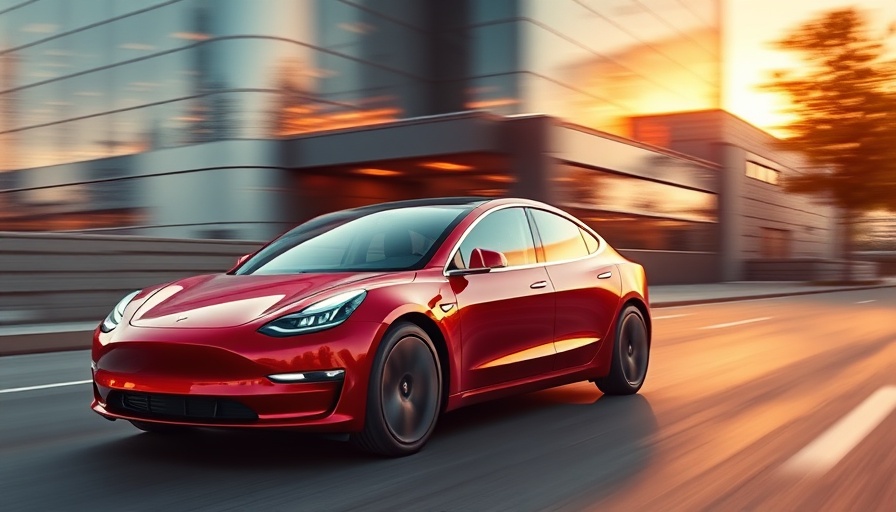
The Rising Cost of the 2025 Tesla Model 3: What to Expect
The Tesla Model 3 continues to carve out its space in the competitive midsize sedan market, where it has emerged not only as a leader in electric vehicles (EVs) but also as a top-selling option among all vehicles in the United States. With a base price starting at $42,490, the Model 3 offers a range of features and capabilities that justify its price tag, but just how much can a fully loaded version set you back? Let's dive into the details.
Performance: Battery Life and Power
The fully-loaded 2025 Model 3 boasts an impressive electric range of 322 miles on a single charge, combined with a power output of 295 horsepower. This makes the vehicle not only efficient but also enjoyable to drive. Significantly, the electric sedan can achieve a remarkable fuel economy equivalent of 145 MPGe city, 128 MPGe highway, and 137 MPGe combined, showcasing its efficiency as a strong selling point for eco-conscious consumers.
Advanced Technology Features - A New Era of Driving
Tesla's infotainment system is often regarded as one of the best in the industry. The Model 3 is equipped with cutting-edge technology, including a large touchscreen interface that operates many vehicle functions. Tesla also excels in integrating over-the-air software updates, which improve vehicle performance and add features without requiring physical trips to a dealership—a feature that greatly enhances the cost-value proposition.
Comparative Analysis: Sedan vs. SUV
In the context of vehicle comparisons, the Model 3 stands out against its SUV counterparts. With fuel efficiency comparisons showing that midsize sedans generally perform better in terms of mileage compared to SUVs, the Model 3 is a top pick for buyers prioritizing both performance and cost-effectiveness. As you weigh your options between sedans and SUVs, consider the lower ownership costs associated with sedans like the Model 3.
Future Trends: What Lies Ahead for Electric Vehicles
The trajectory of the electric vehicle market shows no sign of slowing down. Analysts predict a significant increase in EV adoption across various segments, driven not only by consumer interest in sustainability but also by advancements in technology that continuously lower costs and improve performance metrics. As more models are released, the competition will only intensify, benefitting consumers with more choices and better value.
A Look at the Costs: Is It Worth It?
While fully loading a Tesla Model 3 can lead to a price upwards of $60,000, it's important to take into consideration the savings from lower maintenance costs, fuel savings, and potential tax incentives that vary by state. Understanding the total cost of ownership, which includes insurance rates and depreciation factors, can provide valuable insights when deciding whether this mid-range price tag offers you the best value car for your investment.
Electric Vehicle Reviews: The Broader Perspective
In the larger context of electric vehicle reviews, consumer feedback highlights satisfaction with Tesla's build quality, performance, and innovative features. However, some users have raised concerns about service accessibility and the rapid pace of technology changes, which can make some features seem outdated quickly. Potential buyers should weigh these considerations as they shop around.
The Emotional Appeal of the Brand
Beyond the statistics and figures, owning a Tesla is often associated with a lifestyle choice that embodies innovation, luxury, and environmental consciousness. The emotional connection to the brand can influence purchasing decisions, especially for tech-savvy consumers or those passionate about sustainability.
As we look at the advancements in electric vehicle technology, consumer demands, and ever-evolving market dynamics, it is clear that the fully-loaded Tesla Model 3 represents more than just a vehicle; it is an investment in the future of automotive technology. If you find yourself caught up in the buzzing world of electric vehicles, it's time to take a closer look at what Tesla offers.
 Add Row
Add Row  Add
Add 




Write A Comment